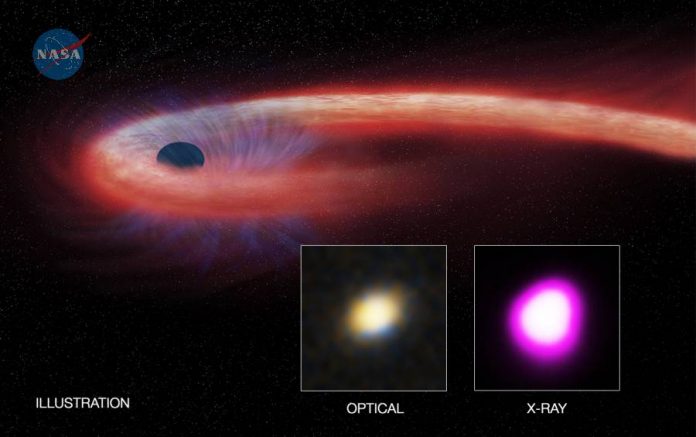
A black hole has been devouring a massive star for about ten years, according to researchers at NASA. According to a statement from the space agency this supermassive black hole was spotted using three X-ray space telescopes.
These telescopes were NASA’s Chandra X-ray Observatory, the Swift Satellite, and European State Agency’s XMM-Newton. This black hole, now under the name XJ1500+0154 habits a galaxy that is 1.8 billion light-years from Earth.
Researchers first spotted it back in 2005, thanks to the European Space Agency’s XMM-Newton telescope, and its brightness peaked in 2008, according to the research team. The study was published online on February 6th, in the journal Nature Astronomy.
What is a TDE?
The phenomenon that explains how a black hole can “eat up” a star is called a tidal disruption event (TDE).
When the celestial body starts breaking apart, the void starts absorbing the pieces. However, the rupture also expels a lot of energy away from the event. Scientists perceive this as X-ray flares which allow them to detect TDEs.
The fact that XJ1500+0154 is taking so long to devour it suggests the star itself is quite large, or that it is being consumed more completely than any other in records of NASA, study team members said.
Scientists have about ten years to solve the puzzle
Dacheng Lin, the study’s lead author, said tidal disruptions were not an uncommon sighting. Researchers worldwide have discovered thousands of them since the 1990’s, but most of them last one or two years.
That is what makes this one so unique. It took a decade for XJ1500+0154 to absorb the star entirely, and scientists want to know why.
Also, Stefanie Komossa, of QianNan Normal University for Nationalities in Duyun City, China, co-author of this study stated these events show how fast a black hole can grow.
However, the team lead by Lin explains the record-setting on TDE will not last forever. They expect the XJ1500+0154 X-ray flare will tune down considerably over the next few years, and that the star it has been using will last ten more years tops.
Source: NASA











